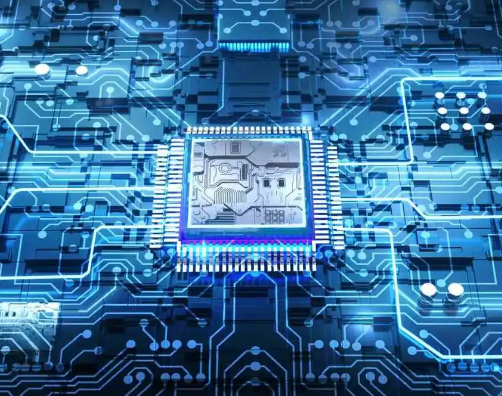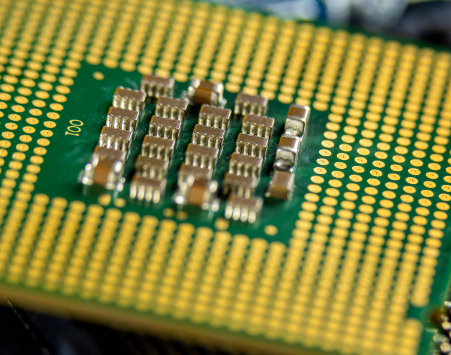Forecasters See Slowdown Ahead
The mood of semiconductor executives was upbeat at their annual gathering in this coastal town socked in with fog. The weather was an appropriate backdrop for the cautious optimism market watchers recommended here.
Semiconductors should have another good year in 2018, but growth is slowing. Further out, a downturn may be coming for the industry and the broader economy — but just when and why is still not clear, speakers said at the Industry Strategy Symposium here.
Gartner predicts after last year’s 22.2-percent revenue surge, the chip market will settle down to a still better-than-average 7.5-percent growth this year. It predicted the chip market will cool off in 2019 and 2020 with two basically flat years.
In the current quarter, managers may tap the breaks on a market with too much inventory, but 2018 will pick up to 7.4 percent growth overall, according to Len Jelinek, a chief analyst at IHS Markit.
Apple’s inventory has ballooned 128 percent, and inventories are up 44 percent at Cisco, 41 percent at Samsung and 29 percent at HP — far above revenue growth, noted Dan T. Niles, a veteran industry analyst and manager of the AlphaOne NexGen Technology Fund.
Looking at the big picture, “this is the best global economy we’ve seen since 2007, all regions are doing well, but there are signs of a bubble,” Niles said, noting an overheated housing market in China, high bond prices in Europe and price/earnings ratios higher than any time since 2000.
The U.S. stock market is on one of its longest bull runs since World War II, and all 45 OECD countries are reporting growth, Niles noted. He compared the current moment to early 1999, a time of expansion not far from a significant contraction.
The global bull market can continue another 6 to 12 months, and the greatest political risks are with rising economic and political tensions between the U.S. and China, said Matt Gertken, an associate vice president at BCA Research. He predicted China will start economic reform in earnest this year, scaling back growth that has long been a global economic driver.
Jelinek from IHS looks at 2018 with “cautious optimism” in part because these days a whopping 70 percent of semiconductors wind up in consumer products. They can rise or fall with macro-economic trends that influence consumer buying.
Both IHS and Gartner expect prices for NAND flash will decline about 18 percent this year although unit sales for it and DRAM will continue to rise.
Capital equipment this year spending will be about flat with 2017’s high level. It is led by Samsung, which is investing more than twice as much as its closest rivals, Intel and Samsung, said Samuel Wang, a research vice president at Gartner.
Chip makers will cut capex nearly 20 percent in 2019 before China’s emerging fabs spur the next uptick in 2020-21. By 2021 China could triple the half a million wafers/month it currently ships, in part through alliances and shared fabs such as a $5 billion project now in discussion for Guangzhou, he said.
The current capex spending comes in part from a race to 7nm among top chip makers. That could lead to an oversupply of capacity at the bleeding-edge node in 2019 given estimated costs of $200 million for a 7nm SoC, Wang predicted.
In emerging markets, Wang forecast deep learning processors could grow to be a $16 billion market by 2022. Edge node chips for the Internet of Things will grow half as fast but could make up a $24 billion market by that time, Wang said.
Although it’s something of a fad, chip executives need to keep an eye on bitcoin, Wang added.
Bitcoin miners have shifted back to ASICs, giving TSMC a business of about $400 million a quarter. It’s a short-term phenomenon that may come and go over the next two years. However, leaders such as China’s Bitmain — which now has revenues of $3 billion — are looking at longer term opportunities in accelerators for machine learning and blockchain, Wang said.
在线留言询价
- 一周热料
- 紧缺物料秒杀
| 型号 | 品牌 | 询价 |
|---|---|---|
| CDZVT2R20B | ROHM Semiconductor | |
| RB751G-40T2R | ROHM Semiconductor | |
| BD71847AMWV-E2 | ROHM Semiconductor | |
| TL431ACLPR | Texas Instruments | |
| MC33074DR2G | onsemi |
| 型号 | 品牌 | 抢购 |
|---|---|---|
| BP3621 | ROHM Semiconductor | |
| BU33JA2MNVX-CTL | ROHM Semiconductor | |
| STM32F429IGT6 | STMicroelectronics | |
| IPZ40N04S5L4R8ATMA1 | Infineon Technologies | |
| TPS63050YFFR | Texas Instruments | |
| ESR03EZPJ151 | ROHM Semiconductor |
- 周排行榜
- 月排行榜
AMEYA360公众号二维码
识别二维码,即可关注


请输入下方图片中的验证码:


























